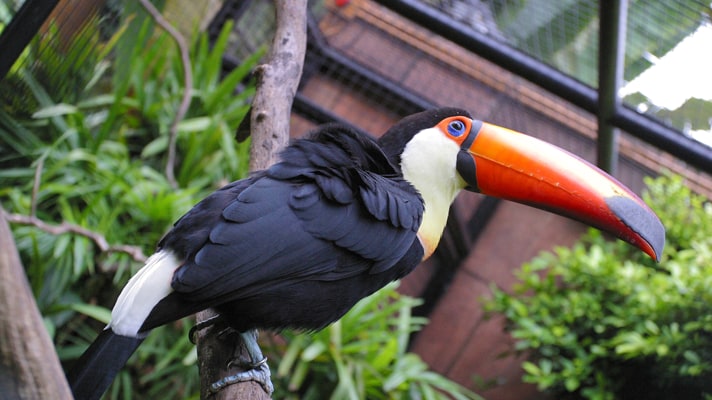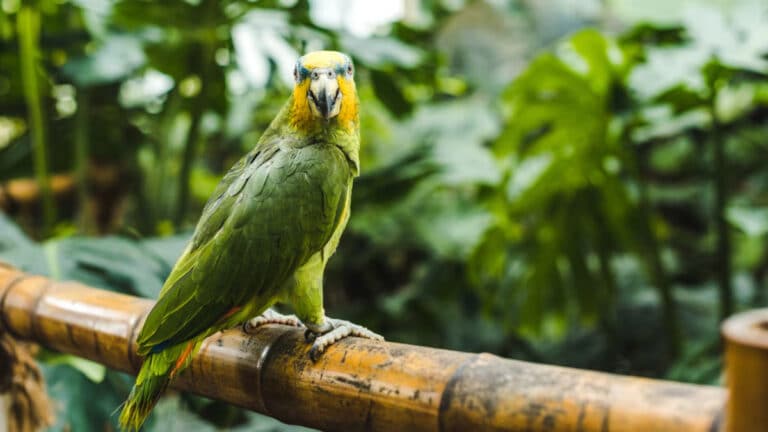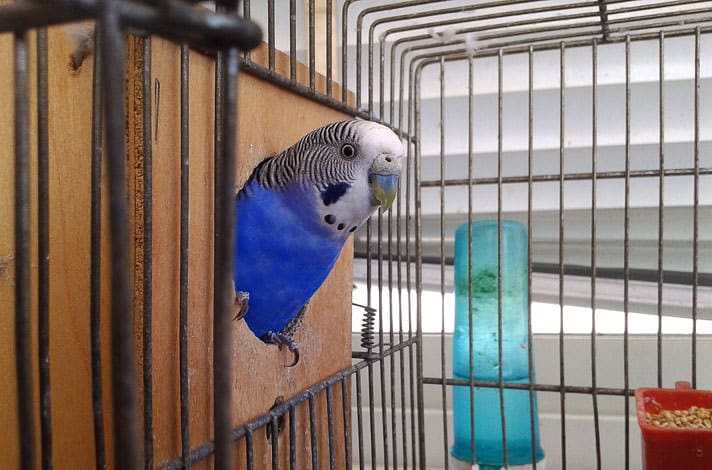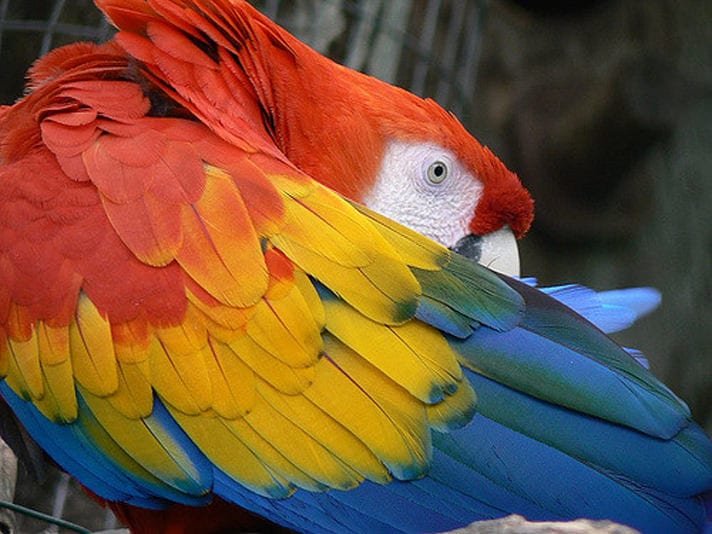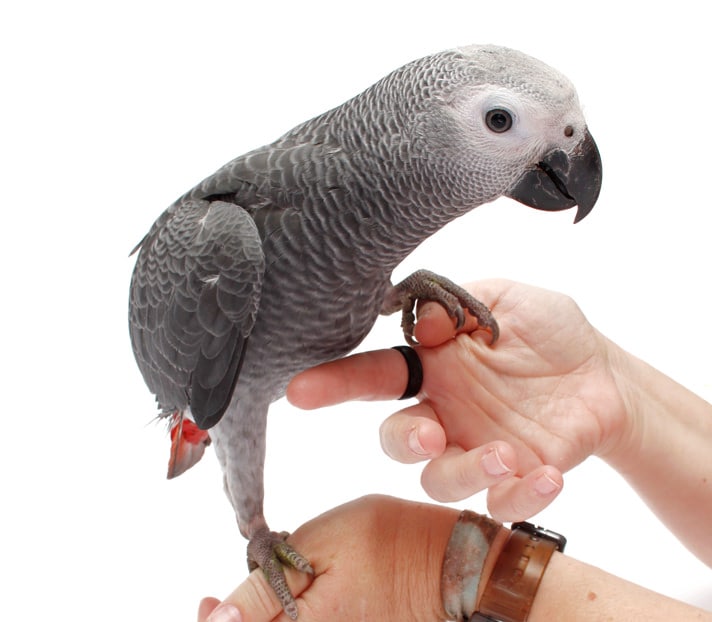In general, outdoor aviaries are much more spacious than traditional bird cages, and they allow birds more space to move around and exercise. They offer a more natural environment and give pet birds exposure to fresh air and unfiltered sunlight — an important source of vitamin D3.
Design Your Bird Aviary
Every aviary is going to be different, depending on the species of birds you keep in it, your climate and whether you are breeding birds or simply providing an outdoor play area for your pet. Some people prefer a patio or solarium-style of aviary connected to their house. Others opt for a free-standing facility. Some aviaries resemble a greenhouse, while others look more like a barn or chicken coop.
How big of an aviary should you build? At a minimum, veteran aviculturist Jerry McCawley recommends flights be at least two or three times the wing span of the bird for the width, six times the body of the bird for the length and at least four times the bird’s body length for the height. A flight that is 8-feet long, 4-feet wide and 8-feet tall would house a group of about 20 budgerigars (budgies or parakeets) or cockatiels, or a pair of African greys or Amazon parrots.
Find out if there are any zoning regulations or noise ordinances that may prohibit your plans. If you live in a subdivision, town home or other planned housing development, there may be restrictions for your community regarding the types of outdoor structures residents are allowed to build.
Build Your Bird Aviary
To build a simple floor-to-ceiling wire flight, start with the foundation. Texas aviculturist Mark Moore recommends concrete flooring for parrots. “Concrete floors can be hosed down, which makes them easy to clean,” he said.
For a more natural look, put a layer of sand, gravel or pine shavings over the concrete; then every couple days you scoop out the dirty sand or shavings. You may also want to leave “holes” in the concrete where to plant trees, shrubs or edible, nontoxic foliage for your pet birds to enjoy.
For softbills (lories, toucans, etc), a dirt floor aviary will also do, according to Moore. “Generally, I don’t recommend dirt floors for [parrots] because there’s a lot of parasites in the dirt, which can harm them,” he said. “The softbills, on the other hand, don’t tend to have as great of intensity of the health problems associated with the dirt that the hookbills do.”
If you are going with a concrete floor, Moore suggests you lay about a 12-inch slab of cement into the ground for the foundation. After that’s down, you can build on your frame. If you will be housing softbills, use either stone, brick, metal or plastic pipes, redwood or treated lumber to frame your flight. For parrots, however, stone, brick or metal are your best framing materials.
After the frame is in place, use a galvanized, welded-wire cloth for the walls and roof. The wire spacing and gauge parameters depend on what size birds you are housing. “Finch aviaries would need small spacing between the wire, and a thinner gauge wire would be adequate,” McCawley said. “However, an aviary for a hyacinth macaw would require very heavy gage wire with larger spacing between the wire, so they do not get toes or beaks caught in a restrictive space.”
Choose a wire that’s a heavy enough gauge that the bird can’t break it apart. For large parrots such as macaws and cockatoos, Moore recommends using 10-gauge wire or heavier. Medium-size parrots, such as Amazons and African greys, should have at least 12 1/2-gauge wire.
For smaller birds, such as cockatiels and budgerigars (budgies), you can probably get by with 16-gauge wire.
“I wouldn’t recommend going any thinner than 16 gauge,” Moore said. “If you go any thinner than that, you might have a problem where a branch falls out of a tree and hits the cage, and that can actually bend a wire and open up a seam on the cage and allow the birds to escape.”
Another important detail is the entrance to your aviary. You may want to use a pre-made, ready-to-hang door from a building supply store (even a shower door will do), or make your own. In most cases, double doors are recommended to prevent escapes.
Also make provisions for a shelter. Even if you put your birds outside on a nice day, weather conditions can change abruptly, in which case your birds may need protection from gusts of wind, rains or excessive heat. Make the last half or third of the flight enclosed. Do this by attaching solid hardwood, Plexiglas, shade cloth, or Filon corrugated plastic panels to the roof and two or three sides.
If you live in the northern half of the country and the birds will be in the aviary year-round, you need more than just a simple shelter such as an indoor-outdoor aviary. This is a screened-in flight completely closed-off during the winter months with an indoor part — an actual building — that has insulation in the walls and a heat lamp or other source of warmth.
Ward Off Intruders
A final consideration is deterring predators, which will vary depending on where you live. Raccoons and opossums pose dangers, and the latter of the two can carry Sarcocystis, which can be passed on to aviary birds. Snakes can do damage if they get into an aviary nest box and eat eggs. Cats might kill birds if they find a way into the aviary, but even if they just have access to the outside screens, they may leave behind bacteria in their saliva. Most mice and rats will not physically harm your birds, but they are a nuisance nonetheless.
A ½- by ½-inch wire will prevent raccoons, opossums, rats and cats from getting through. If snakes and mice are a concern, ¼- by ¼-inch wire on the bottom half of each of the four sides and ½-inch wire for the top half will help. Additionally, building your aviary on a concrete foundation will help keep out the mice and snakes.
Double wire will keep the critters from getting to the birds when they land on the outside wire. This is especially important on the roof of the aviary, but also on the sides; a raccoon will have a harder time reaching a pet bird if it has to get through two levels of wire fencing.
“Make sure the perches do not come right up to the wire so that the raccoons cannot get at a sleeping bird,” warned longtime aviculturist Katy McElroy. “Our perches are all suspended by metal strapping from the tops of the flights so that the wooden perches don’t actually touch the sides of the flight.”
Prevent predators from digging under the aviary by digging down about 6 inches around the perimeter of the flight, and instilling wire down to the bottom. Install a burglar alarm, automated lights, gates and consider getting a watch dog to protect your property from human intruders.
Once you’re finished and you see how happy your feathered friends are in their new hang-out, you’ll see that all the time, effort and money you’ve put into the aviary has been worth it.
Time to Acclimate
Birds need time to adjust to being outside, so put them in outdoor play areas or flights for short periods of time at first. Bring them back inside the house before it gets dark. For those residing in the Midwest or Northeast, aviculturist Katy McElroy suggests putting your parrot outside in his flight for just a couple hours starting at the end of April or early May, then increase the time outside every day up until mid-Fall. As the days start cooling down, begin shortening the time again.
Give your pet bird time to get used to its new surroundings. In most cases, pet birds learn to love their outdoor “home away from home” in very short order.
Posted by: Chewy Editorial
Featured Image: Ingram Publishing/ThinkStock
Share:
